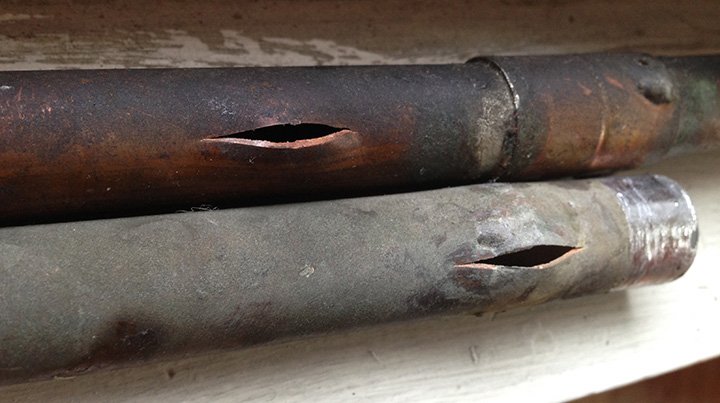When temperatures stay low for an extended length of time, there is a risk that the pipes in your home may freeze. If this happens, it has the potential to cause major damage to your home. This is because when water freezes it expands. This expansion puts a lot of pressure on the pipes and can cause them to burst.
The pipes that are most likely to freeze are those that are exposed to the outside. This would include outdoor hose bibs, swimming pool supply lines, sprinkler lines, and pipes located in unheated interior areas like the basement, crawl spaces, attic, garage, and kitchen cabinets. Pipes that run against exterior walls are also subject to freezing.
To protect your pipes from freezing, follow the tips below.
Tips to Help Prevent Your Pipes from Freezing
- Drain all the water from outdoor-leading water supply lines.
- Remove, drain, and store outside hoses.
- Close off inside valves that supply water to lines that lead outside.
- Keep outside valves open so that any remaining water in the pipes can expand without causing them to break.
- Make sure that pipes located in unheated parts of the house are insulated. You can use pipe sleeves, heat tape, or heat cables to do this. Even wrapping your pipes with newspaper will provide some degree of insulation.
- Keep your garage doors closed if water lines are present.
- Make sure you set your thermostat to a temperature no lower than 55° F, even if you’ll be gone for a long while.
- If you don’t want to run your heat while you’re away, you can shut off your water supply valves and drain the water.
What to Do if a Pipe Freezes

If there is frost present on the pipe or if no water is coming out of the faucet, there is a good chance that the pipe is frozen.
If it turns out that a pipe has frozen, there are a few things you can do to thaw it out and avoid a serious problem.
- Turn the faucet on so that the water can drip out as it melts. As you treat the problem and water begins to flow, the running water will help to melt the remaining ice inside the pipe.
- Heat the pipe with a hair dryer starting with the section nearest to the faucet.
- You can also position a space heater near the pipe.
- If you’re able to get some water from one of your faucets, use it to fill up a container with water and heat it on the stove. Then soak some towels in the warm water and wrap them around your frozen pipes. You’ll likely need to re-soak them after a while to get the frozen water to fully melt.
NOTE: Do not use open flame devices to thaw a pipe, as this could cause them to break.
If you’re unable to get water to come out of the pipe, call Arrowhead Plumbing. We’ll find where the ice is lodged and fix the problem for you.
What to Do if a Pipe Bursts
If a pipe does happen to burst, you should immediately shut off the water at the main valve. If the broken pipe is a hot water pipe, you should also close off the top valve on the water heater.
After you’ve stopped the water from flowing, contact Arrowhead Plumbing. We have the tools and experience to fix and clean up the mess.

